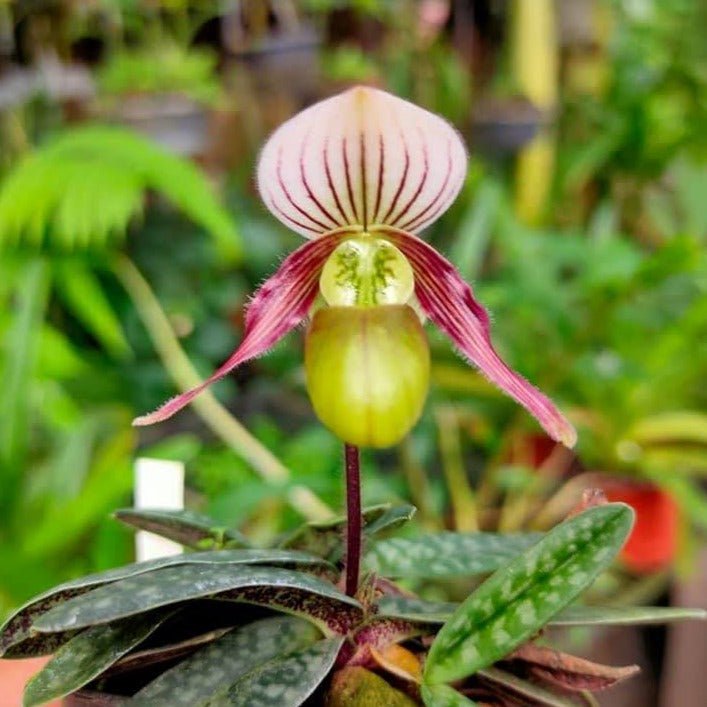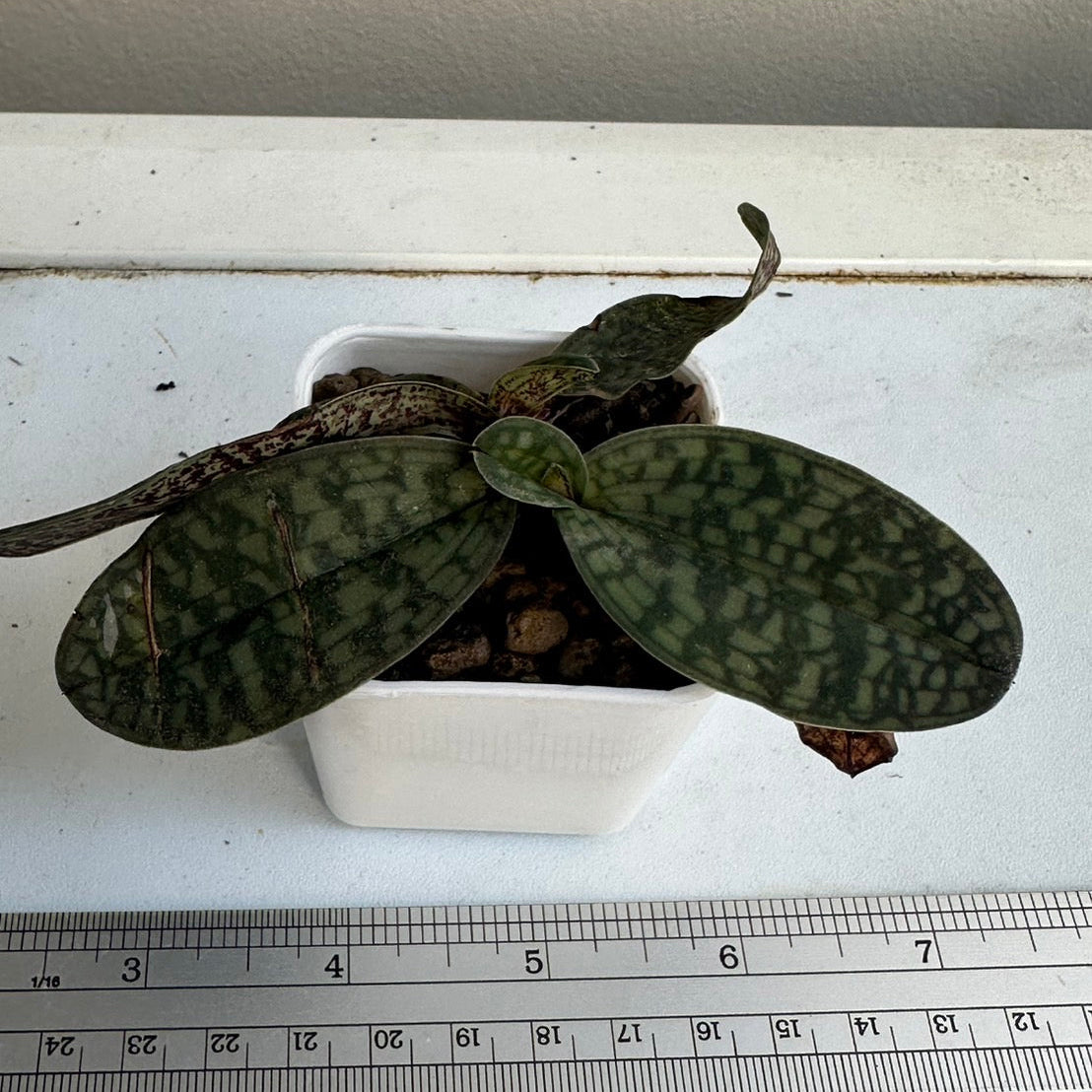Footer menu
Menu Menu
Payment methods



Paphiopedilum canhii
1 Plant bloom size , we repot and pack with clean sphagnum moss
Paphiopedilum canhii (often abbreviated Paph. canhii) is a rare and miniature species of slipper orchid native to limestone regions in northern Vietnam and Laos. It's part of the Paphiopedilum genus, known for their unique pouch-like flowers and relatively slow growth.
This species has some specific needs, especially due to its natural habitat, and can be a challenge to cultivate. Here's a detailed guide to help you grow Paph. canhii successfully:
Origin: Northern Vietnam & Laos
Elevation: ~600–800 meters
Climate: Subtropical; warm to intermediate temperatures
Growth Habit: Terrestrial to lithophytic (grows in crevices of limestone cliffs)
Size: Very compact, small species
Bloom Time: Typically late summer to autumn
Flowers: Small but striking, with dark, mottled patterns
Since Paph. canhii is a limestone-growing species, the potting mix should mimic its natural environment:
Recommended media:
Fine-grade bark (or small Orchiata)
Crushed limestone or dolomite (essential)
Perlite or pumice (for drainage)
Charcoal (optional)
Sphagnum moss (in small quantity, if you need more moisture retention)
⚠️ Avoid overly organic or moisture-retentive mixes. Drainage is critical.
Water regularly, but let the potting mix dry slightly between waterings.
Overwatering can lead to root rot.
Use rainwater or low-mineral water.
Watering frequency: ~2 times per week, adjust based on season and humidity.
Day: 22–28°C (72–82°F)
Night: 15–20°C (59–68°F)
Avoid extremes; it dislikes both heat waves and cold snaps.
Bright, indirect light is ideal.
Avoid direct sun, which can scorch the leaves.
Ideal location: East-facing window, or shaded grow lights (2000–2500 foot-candles).
Too little light will prevent blooming.
Humidity: 60–80%
Good air circulation is vital to prevent fungal issues.
Consider a fan or open windows if growing indoors.
Use a balanced orchid fertilizer (20-20-20 or similar) diluted to 1/4 to 1/2 strength.
Fertilize every 2–3 weeks during active growth.
Use a Calcium and Magnesium (Cal-Mag) supplement if your water is soft.
Repot every 1–2 years, ideally in spring.
Always repot if the mix is breaking down or if roots look unhealthy.
Limestone is essential. This species grows in calcareous environments.
Compact growth means it does well in small pots—don’t overpot.
Difficult to find; often only available from specialty nurseries.
Slow-growing—patience is key.
Pickup currently not available